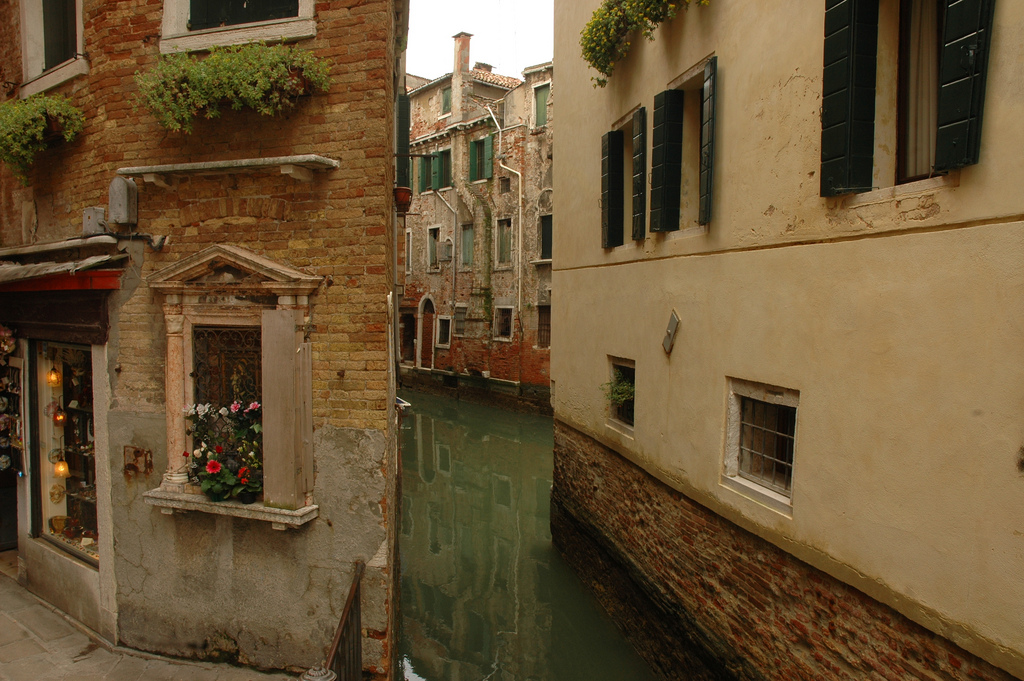By: Marco Roca
 In the popular imagination, Venice has become inseparably intertwined with images of winding waterwa
In the popular imagination, Venice has become inseparably intertwined with images of winding waterwa
ys and resplendent byzantine a
nd gothic architecture. Even the name “Venice” has an aristocratic resonance to it—and for good reason, considering its rich history and widely regarded reputation as one of the most beautiful cities in the world. Unfortunately, the “Queen of the Adriatic” is facing a slew of issues. If Venice manages to stay afloat amidst its problems, it might well serve as a case study for how to approach a number of global challenges in the coming years. Not bad for a city of 60,000 residents built on a few sticks in the mud.
Before Venice became one of the world’s mightiest city-states and long before it was an international tourist and jet-setter hotspot, it had a humble start as a society of refugees fleeing Germanic and Hun invasions in the early 400s. After spending years under siege across the Italian peninsula, the original Venetians saw the 117 islands in the lagoon as a desirable bulwark against aggressors. Since most of these “islands” were little more than tiny plots of sand, mud, and clay, the lagoon’s new residents needed to find a way to fortify the islands’ foundations so that they could support a future empire. The Venetians arrived at the solution of driving wood pilings gathered from the forests of modern day Slovenia, Croatia, and Montenegro into the mud. Since the wood pilings were quickly built upon, the wood was submerged, avoiding oxygenation and subsequent rotting. Remarkably, the constant flow of mineral rich lagoon water caused the wood to petrify. As the wood pilings solidified over the years, so did Venice’s power and reputation. And just as Venice’s grandiose buildings began to seemingly jut directly out of the water, the Venetian Republic suddenly propelled itself into the center of the Renaissance and world affairs.
Although the enterprising group of onetime displaced refugees had spent their history up to this point hardly surviving on the fringes of society, the spotlight zeroed in on Venice for the first time during the Renaissance. After about a millennium of development, Venice rose to the occasion and led the Western World in creativity and innovation. While some may accredit the assembly line to Henry Ford, it was actually the Venetian navy that first conceptualized and instigated the assembly line for ship production. This predated the Industrial Revolution and Mr. Ford by several centuries. Publications worldwide should also pay their respects, as the Venetian Republic fostered the first newspaper. With additional innovations such as the opera house, the casino, and what later became modern-day fabric, Venice also takes credit for, unsurprisingly, the invention of patent law. In terms of human capital, Venice produced a number of tremendously influential individuals during this time period: Marco Polo, Titian, Salieri, and Vivaldi were all native Venetians. Thus, in a very tangible sense, anyone who lives in the western hemisphere, works in manufacturing, or reads the paper can thank the Venetian Republic.
Given Venice’s laudable contributions in shaping the modern world, it is of critical importance to salvage this great city. It is no secret to most that Venice is sinking, and studies published in 2012 show that the rate has increased to five times greater than originally thought. Rising tides are obviously the main culprit, but a newer discovery is potentially even more troubling. The wood pilings that have served as the city’s foundation for centuries and the limestone and brick built upon them have begun to rot and corrode.
Another key problem Venice faces on a daily basis is the effect of pollution. Whereas only a few decades ago people openly swam in the canals, today it would likely take a madman to dip his feet into the polluted and overcrowded water. Speeding jet boats, which were coincidentally invented in Venice, cruises, and the motor-powered boats that now congest the canals both pollute the waterways and suck out vital cement and mud from building foundations. Paolo Costa, the current president of the Venice Port Authority and ex-mayor, posits that the ideal number of tourists is no more than 7.5 million. Venice is currently mobbed with 30 million visitors each year, which is about as many tourists as the entire country of Germany receives annually.
Luckily, the enterprising people of Venice have proposed several solutions to their problems with the environment and overpopulation. For €4.7 billion, or about one-tenth the cost of the recent Sochi Olympics, the MOSE Project is underway to keep rising tides from flooding the city. The project is currently 80 percent complete and shows great promise. If successful, other coastal cities such as Miami, Boston, New York City, and Los Angeles, all of which face the risk of rising tides in the next century, could have a reliable model to use in formulating their own anti-flood plans. The answer to overpopulation is murkier, but a few ideas include an application system and a waiting list to visit the city. Whatever comes of this may also lay the groundwork for successful immigration and visitation policies around the world. Unlike the brackish lagoon around Venice, these waters are untested and unexplored. Dried up funding and a debt crisis similar to the one in the United States, however, certainly make matters more difficult. Despite the challenges ahead, history tends to repeat itself, and Venice may very well flourish again under global scrutiny and continue to lead the way in innovation.
